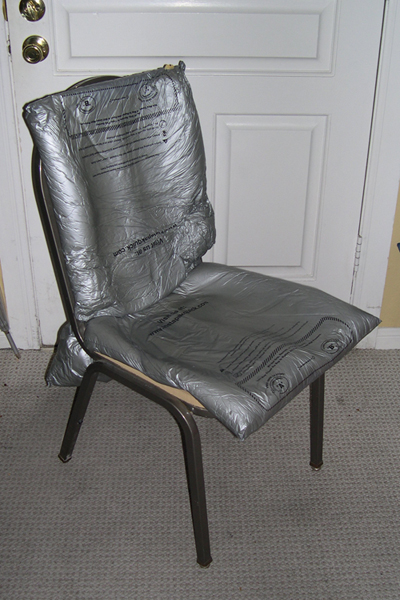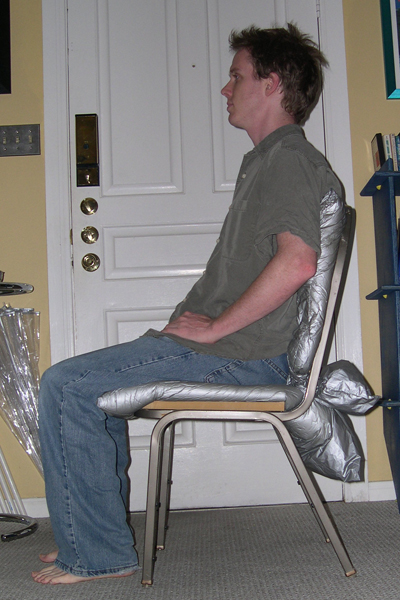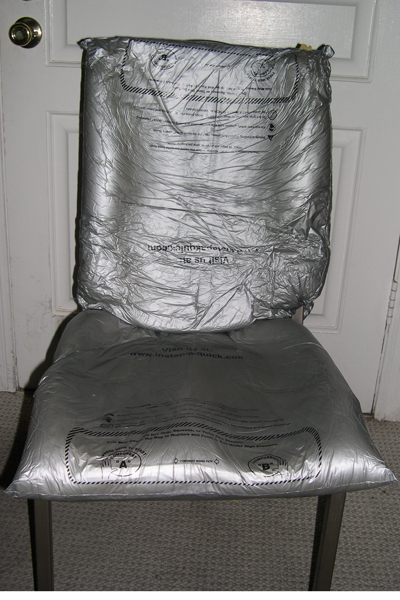[2008-10-14] Custom-contoured seating from foam-in-bag packing cells



Save yourself years of effort forging the perfect ass-groove by packaging your butt the same way other complex and fragile scientific instruments are packaged: with expanding foam-in-bag two-part urethane foam pouches. These pictures show a prototype I've had sitting around for at least 2 years now, and although the seat has suffered a little where my cat clawed at the foam, it's still in surprisingly good shape. Admittedly, this prototype is as ugly as the Devil's toenails, but it was only intended to prove the concept.
My plan, ultimately, is to design a fold-up cardboard frame for this chair with lots of hip industrial box-graphics ("THIS END UP," etc.), i.e. to make a semi-permanent task chair, complete with custom-contoured cushions, entirely out of "disposable" packing materials. Tentatively, the design is named "Airmail." Designing the frame, however, has been sitting inert on my to-do list for a couple of years now, so I thought I might as well go ahead and publish the really cool part of the idea in case I never get around to it.
The chair is amazingly comfortable, of course, because it was formed around my body and fits it exactly. The foam-in-place bags I used go by the trade name "Instapak," and I was able to buy two individually off eBay for not very much. The bags are manufactured in various sizes, and the two I used were both of the largest available size, at least at the time. The bags need to be warmed before use so that the reaction happens quickly enough to insure adequate expansion before setting up. The folks who make the bags want to sell you an expensive "warming station" that lives on your bench top and keeps the bags ready at the proper temperature for use. I just wrapped mine in a heating pad for 10 minutes and they worked fine. The foam is rigid when it is completely set.
Instructions for activating the bags are printed directly on them. First, both bags were draped in appropriate positions on the frame. Note how the bags both protrude through the opening where the plane of the seat meets the plane of the back. This was done deliberately in order to "lock" the expanded bags in place without the use of adhesives or fasteners of any kind. (The fold-up cardboard version will also include this feature, if I ever get around to making it.) With the bags positioned, they were activated, one at a time, per their label instructions, by compressing the two sealed internal reactant pouches through the skin of the bag until they burst with an audible "pop." The foaming process takes several seconds, so there's time to sit in the chair and get comfortably positioned while the bag is still expanding and pliable. The seat was formed first, then the back. Be warned that the reaction generates considerable heat and that you need to be wearing heavy clothing to prevent it reaching an uncomfortable level.
last modified 2008-10-14